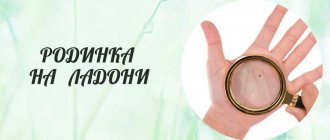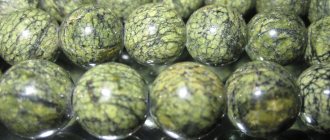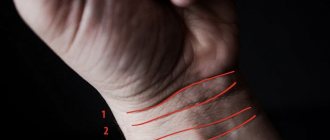How can a mole pose a threat?
The growth of degenerated melanocytes causes the most aggressive malignant tumor - melanoma. May appear on the skin and mucous membranes. Young people get sick very often.
Main risk factors:
- Hereditary predisposition
- Mechanical traumatic damage,
- sunburn,
- The size of the pigment spot (6 mm or more).
Melanoma can develop on its own, but the presence, number, and location of moles increase this likelihood.
The meaning of a mole on the neck - general information
When starting to study marks, it is important to understand that size matters. Small ones (smaller than a match head) do not carry useful information; larger signs are studied depending on their location.
Owners of marks on the neck have a predisposition to develop spiritual qualities. Meditative practices, religious events, yoga classes are of great interest to such people. Also characteristic:
- physical strength;
- energy;
- good health.
In relationships with others, honesty is preferred, they are reliable and emotionally restrained, and are often slow.
When reaching certain social heights, they actively take advantage of a position where they need to “pressure with authority.” A birthmark indicates a lack of risk tolerance, which often prevents one from achieving wealth. Slow movement towards the goal is preferable to going all-in. A characteristic feature is law-abidingness.
Which moles are dangerous and which ones should not bother you?
Nevi can be flat or raised like peas. The color depends on the melanin content - the more, the darker. It happens that there is no pigment, in which case the nodule is white or pinkish. Intensely colored nevi, located in the deep layers of the skin, look bluish on the outside.
Nevi that have signs of change - a fuzzy outline, spotty, uneven color, irregular shape - are called atypical. Answering the question of which moles are dangerous, it should be noted that multiple atypical neoplasms require observation. Especially if genetic relatives have a history of any malignant skin diseases.
Sometimes a wart that looks very similar to it is mistaken for a nevus. Warts (papillomas) can be of viral origin (HPV). By themselves, types of this type of growths do not become malignant. Exceptions: perianal area, genitals, mammary glands. The appearance of warts is not associated with the presence of parasites or the presence of cancer cells.
Experts divide nevi into non-dangerous and melanoma-dangerous.
Spring on a woman's neck
In matters of interpretation of a sign, much is decided by gender. Representatives of the fair sex are distinguished by their optimistic views, devotion and firmness of position. Life energy is often directed towards organizing everyday life and building an ideal “nest”. They are economical and prefer to buy only the things they really need.
Faithful wives, loving mothers, caring friends will always come to the rescue, helping loved ones out of a difficult situation. If she made a mistake when choosing a partner, it will be very difficult to fall in love a second time. A mole on a girl’s neck means that she will prefer a peaceful resolution of a love conflict to a stormy showdown. She will not break dishes, emotionally defend her point of view, preferring compromises and concessions. There is a sign according to which the owner of the mark will repeat the fate of her mother.
Melanoma-dangerous nevi
Which moles are dangerous and cause melanoma?
- Pigmented border nevus
- Blue nevus
- Nevus Ota
- Giant pigmented nevus
- Complex atypical nevus
- Intradermal pigmented nevus (malignant in 10% of cases)
- Limited precancerous melanosis (Hutchinson, Dubreuil)
Marks of fate on the fingers
Here everything depends on the hand, as well as on the gender of their owner.
- The ring finger on a man's right hand means quick career growth and respect.
- For women - loneliness, bad luck in love.
- On the left hand of men - family troubles, difficulties in life.
- For a woman, on the contrary, happiness is in the future, in marriage.
- Little finger . On the left hand, regardless of gender - a good sign for life.
- The index finger is the finger of a leader, career growth, the presence of all benefits.
- On the middle finger on the left - a person is not given the opportunity to make money with his talent, although it will bring great fame. On the right - there will be fame and material well-being.
- Thumb . The mark speaks of the sleight of hand of their owner. Such people make unsurpassed surgeons, but also good pickpockets. It is also a sign of a happy marriage.
- If the signs are on the toes , then the person suffers from suspiciousness and is mentally unstable. If you know this shortcoming of yours, then you can fight it.
- Specks on the palm are rare, but if they are present, their significance is considered very significant. They can be located on the lines of fate, which means they can tell a lot about the future of their owner. Palmists pay special attention to them.
Harmless nevi:
- Galonevus
- Spindle cell virus (Spitz)
- Balloon cell nevus
- Fibroepithelial nevus
- Papillomatous nevus
- Verrucous nevus
- "Mongolian spot", so-called Halo-nevus (Setton's nevus)
All neoplasms must be monitored. If a mole suddenly changes color, begins to grow, the edges or outlines change, or itching appears, you need a dermatologist.
The presence of melanoma-dangerous nevi, as well as an inconvenient location of the nevus, making self-control inaccessible, permanent damage (for example, by clothing or jewelry) are indications for removal.
Red moles during pregnancy
Due to changes in hormonal levels, pregnant women may develop red angiomas, in most cases on the face, chest, abdomen, back, neck and arms. A spider-like appearance of a mole often occurs.
After childbirth, the formation that appears usually disappears or fades - you shouldn’t worry too much, but you shouldn’t ignore it either.
You just need to monitor the condition of the mole, its size, color; if they change or if irritating or disturbing factors appear, you should immediately go to a specialist.
A red mole can appear during breastfeeding, but when hormonal levels normalize, it most often resolves.
Is it possible to identify dangerous moles on your own?
In order to independently determine which moles are dangerous, several self-examination methods have been developed (English Friedman ABCDE rule, Russian version FIGARO). The most well-known diagnosis for “malignancy” is called ACORD.
A – asymmetry
K – edge, border. Should be smooth, clear, without blur
O – coloring. Uniform, without inclusions
R – size. Any neoplasm has a risk of degeneration, but in large ones it is higher
D – dynamics. Any changes should alert you.
Study of melanoma and moles
Scientists examined 566 melanoma patients within three months of diagnosis. To their surprise, they noted that most patients had few moles and no features with unusual borders or color variations at the time the cancer was detected. Among patients younger than 60, they found that people with six or more atypical moles at diagnosis tended to have thicker melanoma—a sign of lethality because these skin cancers go undetected longer. And the deeper it grows, the worse the prognosis. In this age group, having more than 50 moles was associated with less thick melanoma. There is no perfect explanation for these findings. In people with different numbers of moles, melanoma can present with varying levels of aggression. People with a handful of atypical moles may also have a harder time keeping track of changes in size, shape, and color—especially since these moles may appear on the back or in places that are hard to see.
Atypical moles and melanoma
People with 10 or more atypical moles have a 12-fold risk of melanoma.
But how do they differ from ordinary nevi? Atypical moles, also known as dysplastic nevi, are unusual-looking moles that appear abnormal under the microscope. Although they are benign, these moles deserve more of your attention because people with atypical moles are at increased risk of developing melanoma, a dangerous skin cancer. An atypical mole can appear anywhere on the body. The appearance of these moles can vary greatly. The best advice is to know your skin, keep an eye on any moles to spot anything new, changing or unusual and bring it to the attention of a dermatologist. An atypical mole is not skin cancer, but the presence of these moles is a risk factor for developing melanoma.
Although rare, melanoma can occur in the area where atypical moles are located. That's why it's important to know about these moles, have them checked by a dermatologist, and monitor their development. If you have atypical moles plus a family history of melanoma, your risk of cancer is higher. It is important to see your doctor more often if you:
- fair skin, light eyes or hair;
- freckles and many moles;
- have a family history of melanoma or non-melanoma skin cancer;
- photosensitivity;
- problem with tanning;
- repeated sunburn.
It's important to note that even without a family history of melanoma, if you have atypical moles, you have an increased risk of developing melanoma.
How to identify an atypical mole
At first glance, it is difficult to understand how an atypical mole differs from a normal mole. Below are some warning signs to watch for. The first five letters of the Latin alphabet are used as a guide to recognize the warning signs of atypical moles and melanoma.
- A is a sign of asymmetry. Atypical nevi or cancer have an asymmetrical shape.
- B—border clarity. In hazardous elements they are uneven, jagged or “floating”.
- C—coloring features. Different shade options, dark and light, are a bad sign.
- D - dimensional features. An increase in the size of a mole by more than 6-8 mm is an alarming sign regarding cancer.
- E—dynamics of change. If a mole changes quickly, you should consult a doctor.
What causes atypical moles?
Scientists and researchers are still working to understand what causes atypical moles. In general, they are thought to be caused by a combination of genetic and environmental factors.
Atypical mole syndrome
People with atypical mole syndrome have a particularly high risk of developing melanoma. The syndrome is associated with the following three characteristics: 100 or more moles on the body; one or more moles with a diameter of 1/3 inch (8 mm) or more; one or more atypical nevi If you have hereditary risk factors for melanoma, as well as many atypical moles, it is worth visiting a dermatologist twice a year.
How to treat atypical moles?
If you have one or more unusual moles, talk to your dermatologist about a surveillance program and whether the moles need to be biopsied to make sure they are not melanoma.
The more abnormal features moles have, the more dangerous they are. Frequent monitoring of these moles is especially important so that if melanoma occurs, it can be detected and treated as early as possible. If your doctor identifies a mole as suspicious, or if new moles appear after age 40, you may need a biopsy. Text: Alena Paretskaya.
Marks on the face
- Above a woman's lip they speak of her cunning. This is a sign of a domineering nature. They are not affectionate towards their husband or children. It is more important for them to make a career and achieve all the blessings of life.
- On the nose, above the lip, on the cheek - this triangle attracts the attention of men, but be careful - this is a very eccentric person.
- On the nose is the mark of a good-natured, easy-going personality. A woman can be frivolous, but it is impossible to be angry with her. Such people can often change jobs. Everything about them is somehow temporary, unsteady.
- A spot on the chin reveals a man with a powerful, even despotic character.
- Women with a mole on the left side of the chin have a happy destiny. They are generous and optimistic.
- A mole on the left temple speaks of a sentimental character.
- On the right - ladies have fortune-telling abilities. In childhood, these people had many complexes, over time they acquire solid knowledge and get on their feet.
- A mark in the center of the chin will help tell you about your character . This is a stubborn person, the larger the nevus, the more stubborn. This is a dictator, a domestic tyrant. It is impossible to work with him at work.
- If there is a dot under his arm , then he is an ideal worker, and in the family he is a gentle, good-natured person.
Markings on the abdomen
A spot on your stomach can tell you a lot. If the signs are located in the center of the abdomen, then this person can achieve a lot in his life. It is also a sign of passion for carnal pleasures and excessive gluttony.
Or maybe it's the other way around. He is able to give up alcohol and tasty foods. Also, their owner likes to often change sexual partners. If this does not work out, then he has a desire to commit a crime on this basis.
It will not hurt to know that a seal on the stomach can predict sudden death from a heart attack. It is important to monitor your heart health.
Three witch marks
During the Inquisition, those with moles faced a real risk of being burned at the stake. At that time in Europe, these formations were considered devilish marks.
Nevi located above the upper lip, in the temple area, above the knee are considered especially dangerous. These moles were considered witch marks.
The spot above the lip attracts the eye and has a slight hypnotic effect. It was believed that everything said by the owner of such a nevus could come true. A person with a mole above his lip may utter hurtful words or a negative wish by accident. But if they come true, they will cause misfortune.
People with a spot on their temple may have the gift of clairvoyance, predict the future, “scan” a person, immediately determine his qualities, distinguish lies from the truth.
Owners of a mole located just above the knee are spiritually connected to a parallel world. They often see in their dreams deceased relatives and acquaintances who come to convey important information.











